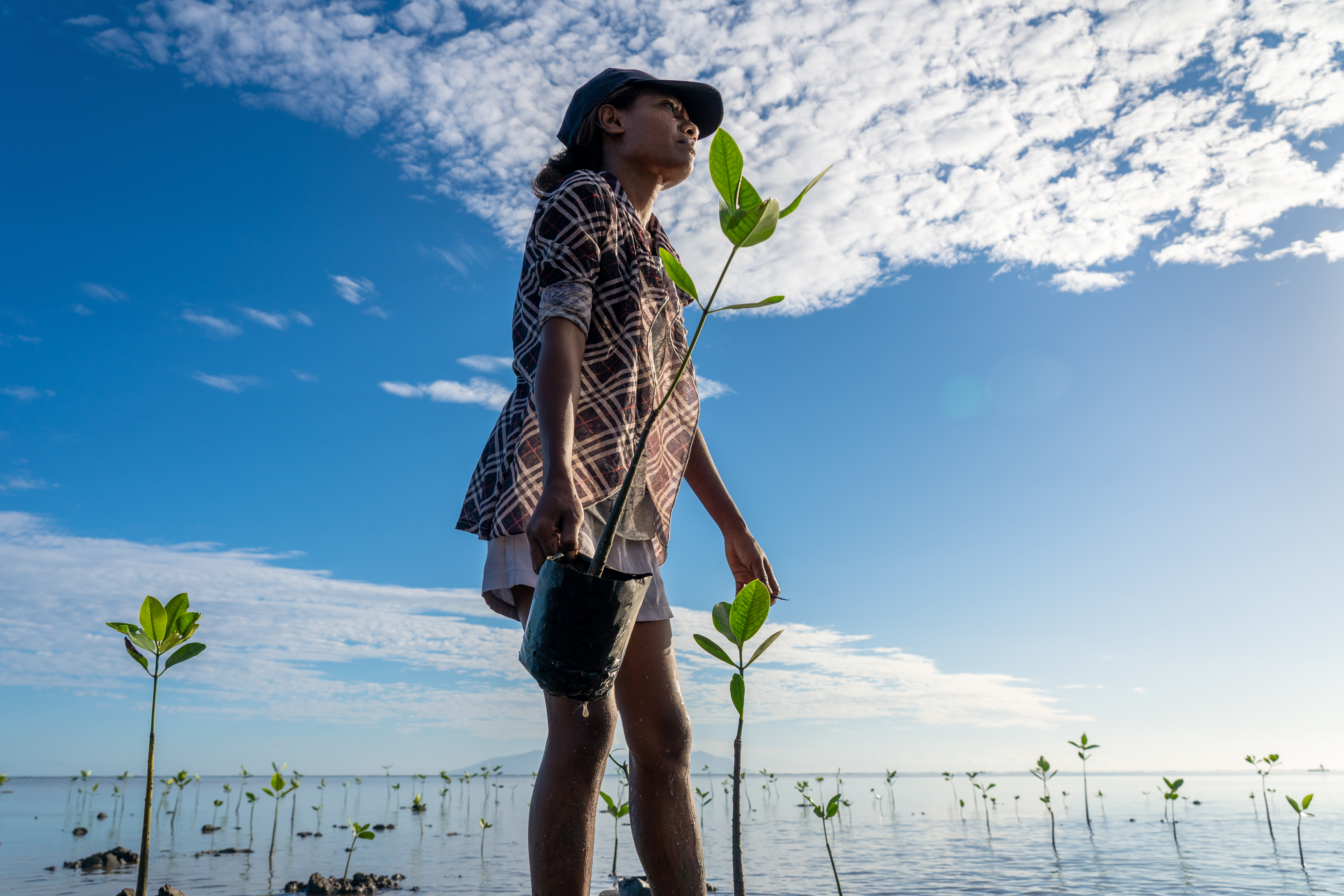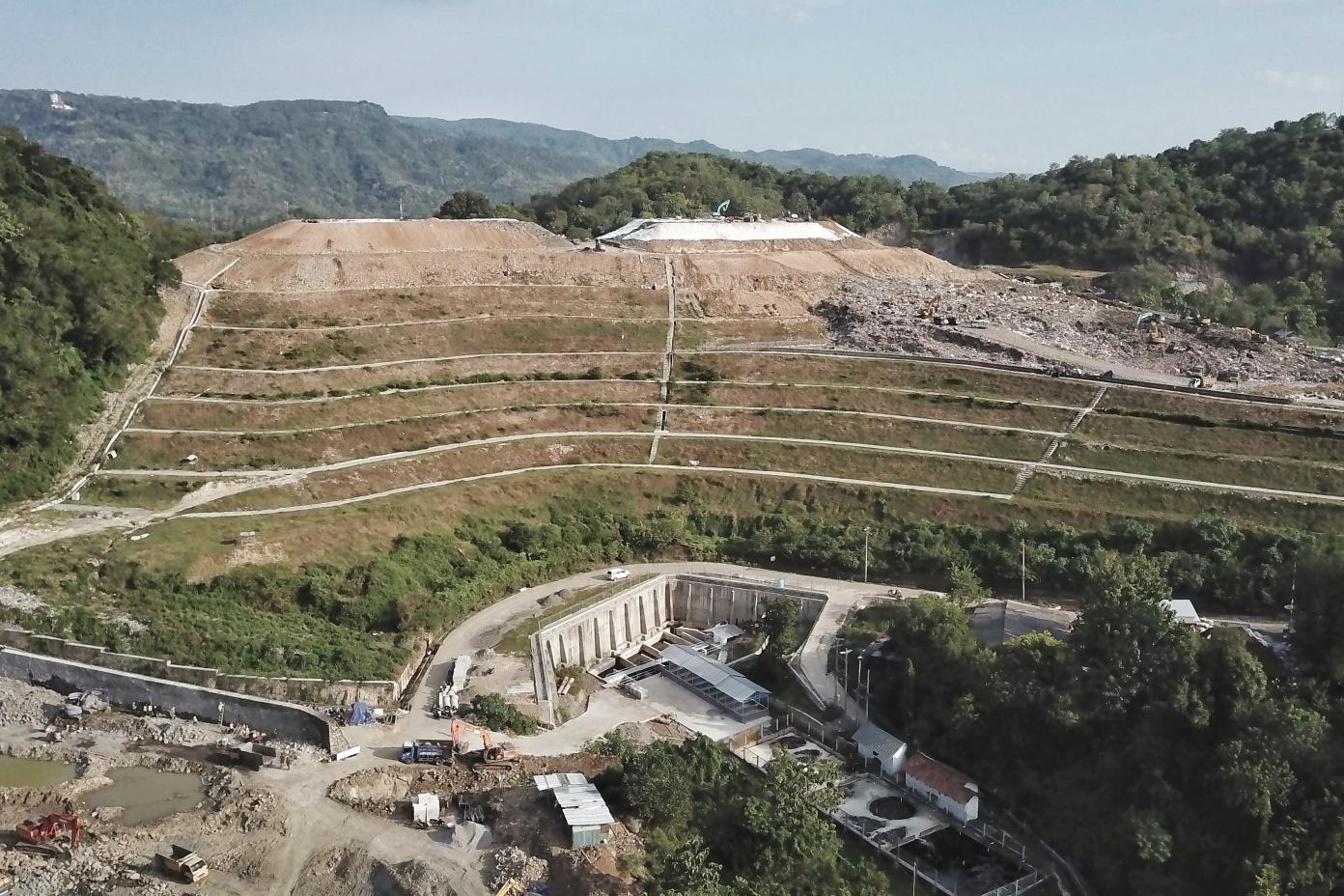As we strive to reach our climate goals, it is time to close the gaps in financing our future.
What if gaps in climate financing hold us back in reaching our climate goals?
January 16, 2023

Mangrove planting in Timor-Leste. Mangroves are a cost-effective way to protect coastal communities and capture carbon.
This What If…? is the third of an exploratory series released for COP27 as a collaboration between UNDP Crisis Bureau and the Regional Bureau for Asia Pacific Horizon Scanning Initiative. The series places a spotlight on the signals of early signs of change in our climate and disaster futures, offering insights into our hybrid horizon scanning report: Anticipating Risks and Uncertainties for Asia and the Pacific.
By Beth Allen, Disaster Risk Reduction Team for Building Resilience at UNDP Geneva.
__
Last November, world leaders gathered in Sharm el-Sheikh to reaffirm their commitment to climate action at COP27. The annual climate conference gave rise to the landmark “loss and damage” fund for the countries most vulnerable to the impacts of climate change. But funds for loss and damage alone will not be enough, we must also prevent the climate crisis from worsening.
The Paris Agreement is the primary driver for this, setting the precedent for efforts to reach net-zero emissions and limit global warming to 1.5 degrees Celsius. Yet, as highlighted by UN Secretary General António Guterres at the conclusion of COP27, discussions at last November’s conference failed to address the issue of reducing emissions. This is despite projections that the global transformation to low-carbon economies will require investments of at least $4-6 trillion every year. This is where climate financing comes in.
What is climate financing?
Whether its locally, nationally or internationally sourced, climate financing refers to funds drawn to support mitigation and adaptation actions that will address climate change.
One such example is in Indonesia, where UNDP have been working with the Indonesian Government on the Green Bond and Green Sukuk Initiative. Through the initiative, the Green Sukuk, a shariah-compliant bond, has raised more than US$2.75 billion for financing or refinancing green projects across Indonesia.

Using proceeds from the UNDP-supported Green Sukuk, the Piyungan landfill in Indonesia was recently revitalised to reduce emissions.
Financing net-zero futures for Asia and the Pacific
In our Horizon Scanning Initiative, UNDP practitioners from across the region mobilised to look for signals of change in the future. Through this, we found signals of record-setting growth in the clean energy sector, offering opportunities for the decarbonisation of energy production in the region.
However, the future will not be without challenges.
In Southeast Asia, our horizon scanning found that despite eight out of ten countries now having net-zero targets, an estimated $3 trillion gap in climate financing is holding back efforts to reach that critical 1.5-degree goal by 2030. Investments in clean energy make up more than half of this financing gap, presenting challenges for growth in the sector as we look forward.
Alongside this, the signals contained with our horizon scanning report have highlighted that the garment industry in Southeast Asia is underperforming when it comes to the Paris Agreement. With Southeast Asia projected to have the strongest export performance in Asia and the Pacific over the next year, the decarbonization of industry is key to reaching our climate goals.
Reaching 1.5: the smallest number with the largest impacts
As we reach the halfway point between the establishment of the Paris Agreement and its 2030 deadline, the case for investing in a net-zero future is now stronger than ever. For Asia and the Pacific, this means not only embracing the opportunities presented by clean energy growth, but also addressing the challenges of financing the trillions of dollars needed.
To find out more about the opportunities and challenges the region faces between now and that critical deadline, and to learn about the potential impacts of climate inaction, read our hybrid horizon scanning report “Anticipating Risks and Uncertainties for Asia and the Pacific”.
__
Read the whole COP27 Series:
- Blog #1 - What if unleashing the power of women is the path to climate resilience?
- Blog #2 - What if early warnings do not result in early action?
- Blog #3 - What if gaps in climate financing hold us back in reaching our climate goals?
Still curious to know more on the risks and uncertainties of our future? See our What If…? blog series for the International Day for Disaster Risk Reduction 2022, where we explored what the future might hold for early warning and early action for all…

 Locations
Locations


